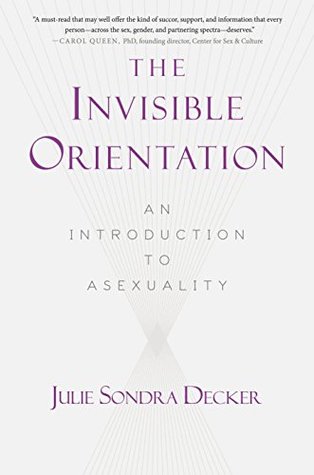More on this book
Community
Kindle Notes & Highlights
Some felt my lack of interest in a central aspect of their lives somehow disrespected sex itself or the people who love it.
If everyone treats you like you’re broken, you may eventually crack.
“I’ve known for years that I’m not like other people when it comes to sex, but I always just thought I was simply not very good at being straight.”
But sexual orientation is not determined by whether someone has sex or who they have it with. Orientation is not a behavior—not for asexual people and not for anyone.
Some people misinterpret aesthetic appreciation, romantic attraction, or sexual arousal as being sexual attraction,
A person’s sexual orientation describes how that person experiences attraction.
If someone’s hair color or weight or marital status changes, they change how they describe themselves. The change in description does not mean they weren’t an authentic example of what the previous label described when it fit them.
For some people, sexual orientation is fluid.[5]
Asexuality also doesn’t refer to a physical inability to become aroused.
People who are not romantically attracted to others are called aromantic. They may stay single or pursue non-romantic partnerships of some kind; romantic partnerships aren’t the only kind of committed relationship. Aromantic folks are fairly common in asexual communities. While some romantic asexual people describe the interest in romance as a drive in and of itself—like a sex drive, a romantic drive can cause unattached people to wish for romantic partners and they may be romantically attracted to others—aromantic people don’t experience this. People who identify as aromantic might describe
...more
This highlight has been truncated due to consecutive passage length restrictions.
sensual attraction
Kink, Fetish Play, and BDSM
But gray areas exist in all orientations.
Demisexuality
Secondary sexual attraction is more gradual, though not inherently a “different kind” of sexual attraction—it just happens under different circumstances. A partner starts to seem sexually appealing only after an emotional bond develops (not necessarily love), based on qualities that can’t be perceived through immediate observation of the subject without interaction. This can happen in conjunction with primary sexual attraction, combining with it, enhancing it. But some people only experience that slow, less reactionary rise of interest—they never experience primary or immediate sexual
...more
To understand demisexuality, one just needs to realize that demisexual people aren’t identifying that way to shame anyone or separate themselves from a “lower” form of sexual interest. They’re describing how sexual attraction works for them, and observing that it’s different from the way it works for most because they have no concept of “do you think that person’s hot?” just based on how someone looks, sounds, smells, or moves. (Many asexual people have this bewildering experience in adolescence—being asked by friends to state whether someone is attractive and having no idea what they’re
...more
If someone’s relationship therapy focuses entirely on how to help an asexual person tolerate or initiate sex more often to satisfy someone with a larger sexual appetite, it is not balanced therapy. Pushing someone into unwanted sex and telling them they should like it is abuse.
When the overarching master narrative of society dictates that “being fully human” or “being a complete person” is dependent on experiencing sexual attraction, there are specialized situations in which asexual people can be actively persecuted/disliked for being asexual,[18] and that is rarely taken into account by those who want to exclude them from queer spaces.
Asexual people’s orientation is almost always considered the least relevant aspect of their identity, and therefore, it is rarely accepted as the cause of their negative experiences.
Western society treats these groups as if they exist to perform certain functions for the majority rather than to have their own wants and needs, so their sexual agency is rarely respected.


